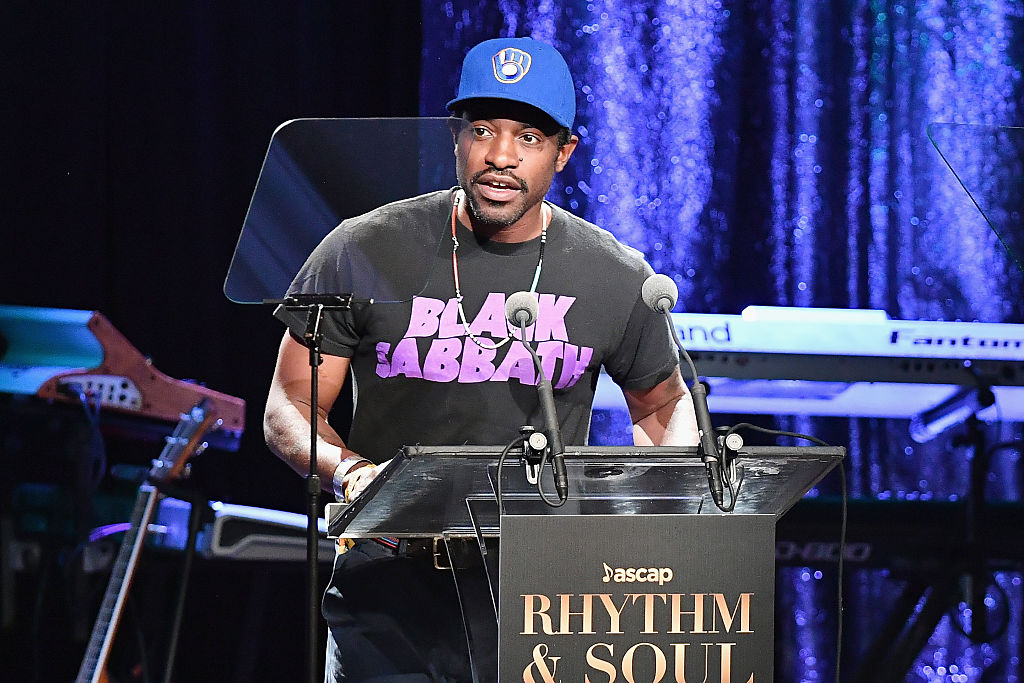Last year, Hit-Boy and The Alchemist teamed up for “Slipping Into Darkness,” a song that saw the two rhyming over the other’s production. Both California producers sounded comfortable, highlighting their underrated skills as lyricists. Since the turn of the decade, Hit-Boy and The Alchemist reached new levels in their careers by releasing prolific full-length collaborations at a high volume. Hit-Boy has worked closely with Nas, Big Sean, Dom Kennedy, The Game, and his father, Big Hit. The Alchemist teamed up with Boldy James, Freddie Gibbs, Armand Hammer, Curren$y, Roc Marciano, and Earl Sweatshirt for stellar collaborations.
Most recently, Hit-Boy and The Alchemist teamed up to produce the entirety of Benny The Butcher’s latest album, Everybody Can’t Go. Known for being skilled beat-makers and collaborators, their lyrical skills should not go unnoticed. Hit-Boy and The Alchemist’s latest 3-song EP, Theodore & Andre, makes sure of that. Their bars are at the center of attention while blending their production styles.
Hit-Boy & The Alchemist Blend Production Styles
On Theodore & Andre, Hit-Boy and The Alchemist expand their chemistry as they rhyme over each other’s production together. This time, there’s a clear-cut intention to create memorable records that build off of a combined sound rather than flexing their lyrical muscle. Hit-Boy’s contemporary soul blends seamlessly with The Alchemist’s vintage loops. The EP’s opening track, “Morrissey” is quintessential Alchemist with its cinematic sample chop and downbeat boom bap. Next, Hit-Boy showcases the versatility of his production, handling the beats on the EP’s other two songs.
“The Main Event” starts as an upbeat trap banger. Hit-Boy raps before transitioning into a traditional drum break over which Alchemist rhymes. The two rapped over distinct beats on “Slipping Into Darkness,” but here, they rhyme over one melody that varies in percussion. The beat switch gives them each their own moment to shine whereas they shine together on the closing track. The Hit-Boy-produced beat on “Don’t Be Gone” is reminiscent of something one might hear on the King’s Disease trilogy. In this song, Hit-Boy and Alchemist rap over a beat that fits both of their styles perfectly. It spotlights not just their synergy as producers, but their lyrical chemistry as well.
Read More: Earl Sweatshirt & The Alchemist “VOIR DIRE” Review
Don’t Sleep On Their Lyricism
While they are certainly skilled producers, both Hit-Boy and The Alchemist have shown that they’re equally stellar MCs. Theodore & Andre shows that the two excel at both skill sets and traverse between them quite easily. Hit-Boy’s flow is smooth while Alchemist’s is choppy, which is fitting for their respective styles of production. They find their own pockets, no matter the production similar to how they can cater a particular sound to an artist they’re producing for.
The way Alchemist starts rapping on “Morrissey” makes one wish that he would spit over his beats more often. His bars are sparse as he emphasizes the end of each line. Hit-Boy then comes in at the end with a short yet smoothly executed verse. Throughout Theodore & Andre, both of them flex their lifestyles in their rhymes. The Alchemist raps about outdoing his competitors, making references to his studio and touring life with plenty of food metaphors. Hit-Boy embraces his success, attributing it to his work ethic and divine timing. Their collaborative chemistry really comes together on “Don’t Be Gone,” where they trade celebratory bars over a soulful saxophone loop.
Overall, Theodore & Andre is a lean 3-track EP that displays the chemistry between two artists at the top of their game as rappers and producers. As such a short listen, it is enjoyable for what it is—a quick victory lap. It may not contain their best material ever, but it is something new and exciting for Hit-Boy and The Alchemist. Hopefully, this EP is just the beginning of a fruitful partnership.
[via]
The post Hit-Boy & The Alchemist “THEODORE & ANDRE” Review appeared first on HotNewHipHop.






 Shirt Embroidered.” Emotionally, the album covers everything under the sun with the same sense of passionate wonder. Take “Ants To You, Gods To Who ?,” for example, with its cold, dreamy atmosphere accentuated by a unique flute tone and melodic direction. It also represents the “She Lives In My Lap” artist’s own role amid all this. This isn’t really a solo album — in fact, none of his work truly is. But his skill and sensibilities shine through on everything he touches, and 3 Stacks is incredibly grateful for all the avenues that championed his artistic freedom, of which this is the latest.
Shirt Embroidered.” Emotionally, the album covers everything under the sun with the same sense of passionate wonder. Take “Ants To You, Gods To Who ?,” for example, with its cold, dreamy atmosphere accentuated by a unique flute tone and melodic direction. It also represents the “She Lives In My Lap” artist’s own role amid all this. This isn’t really a solo album — in fact, none of his work truly is. But his skill and sensibilities shine through on everything he touches, and 3 Stacks is incredibly grateful for all the avenues that championed his artistic freedom, of which this is the latest.